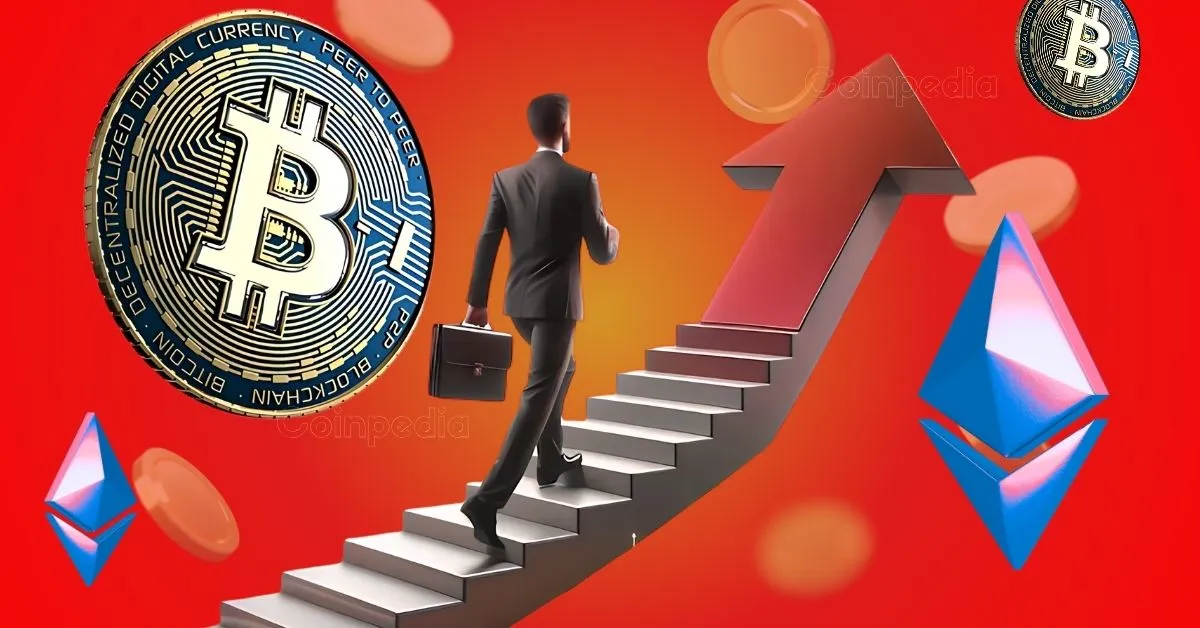
Charles Schwab’s Crypto Leap: A Strategic Move in the Evolving Financial Landscape
The Growing Demand for Crypto Integration
Charles Schwab’s decision to venture into spot Bitcoin and Ethereum trading is a response to a significant shift in investor behavior. The company’s CEO, Rick Wurster, highlighted a 400% increase in traffic to crypto-related content on Schwab’s platforms, indicating a surge in interest among its client base. This trend reflects a broader movement towards digital asset adoption, as more investors seek to diversify their portfolios beyond traditional stocks and bonds.
Schwab’s move is not merely a reaction to market trends but a strategic effort to consolidate its clients’ investment activities. By offering crypto trading alongside its existing suite of financial products, Schwab aims to become a one-stop shop for investors. This approach aligns with the company’s philosophy of providing comprehensive financial services, making it easier for clients to manage their wealth without juggling multiple platforms.
The Strategic Advantage of a Cautious Approach
Schwab’s entry into the crypto market is characterized by a cautious and calculated approach. Unlike some crypto-native platforms that cater to enthusiasts and speculators, Schwab targets a different segment: investors who are intrigued by crypto but prefer a more conservative investment strategy. This focus on mainstream investors allows Schwab to leverage its existing client base and brand recognition, which are significant competitive advantages.
The company’s decision to wait for regulatory clarity before launching its crypto trading services underscores its commitment to risk management. The anticipated changes in U.S. crypto regulations, expected by April 2026, will provide a more stable environment for institutional adoption. This patience is a strategic move that mitigates potential legal and compliance risks, ensuring a smoother transition into the crypto space.
The Competitive Landscape and Market Disruption
Schwab’s entry into spot crypto trading poses a direct challenge to established crypto exchanges like Coinbase and Kraken. These platforms have built their businesses around providing access to a wide range of digital assets and catering to a more crypto-native audience. Schwab, however, aims to attract a more mainstream investor base—those who are already familiar with traditional financial products and prefer the security and convenience of a trusted brokerage firm.
Schwab’s competitive advantage lies in its existing infrastructure and brand recognition. By integrating crypto trading into its existing platform, Schwab can offer a seamless and familiar experience for investors who are new to digital assets. This could potentially disrupt the existing crypto exchange landscape, as mainstream investors flock to established institutions like Schwab for their crypto needs.
However, Schwab will need to overcome the perception that it is a latecomer to the crypto party. Coinbase and other crypto exchanges have already established strong brand loyalty and a deep understanding of the crypto market. Schwab will need to differentiate itself by offering superior customer service, competitive pricing, and a more user-friendly platform.
The Potential of Stablecoins and Future Growth
Beyond Bitcoin and Ethereum, Schwab is also eyeing the stablecoin market as a potential area for growth. Stablecoins, which are cryptocurrencies pegged to the value of a stable asset like the U.S. dollar, offer a more stable and predictable way to transact with digital assets. Wurster believes that stablecoins could play a key role in the future of finance, enabling faster and cheaper transactions and facilitating the integration of crypto into traditional financial systems.
By exploring the stablecoin market, Schwab is positioning itself to capitalize on the growing adoption of digital currencies and the increasing demand for stable and reliable payment solutions. However, the stablecoin market is also facing increasing regulatory scrutiny, with concerns about their potential for illicit activities and their impact on financial stability. Schwab will need to carefully navigate the regulatory landscape and ensure that its stablecoin offerings comply with all applicable laws and regulations.
Conclusion: A Calculated Gamble with High Stakes
Charles Schwab’s decision to launch spot Bitcoin and Ethereum trading represents a significant milestone in the mainstream adoption of crypto. By offering access to digital assets through a trusted and familiar platform, Schwab is poised to attract a new wave of investors to the crypto market. However, this move is not without its risks. The regulatory landscape remains uncertain, the competition is fierce, and the potential for fraud and manipulation is ever-present.
Schwab will need to carefully navigate these challenges and demonstrate its commitment to protecting its clients and maintaining the integrity of its platform. Ultimately, Schwab’s success in the crypto market will depend on its ability to adapt to the rapidly evolving landscape, embrace innovation, and build trust with its clients. Whether this leap into crypto proves to be a calculated dive or a desperate plunge remains to be seen, but one thing is certain: the financial world is watching closely. This move by Charles Schwab is not just about adding another asset class; it’s about redefining the future of investment.





